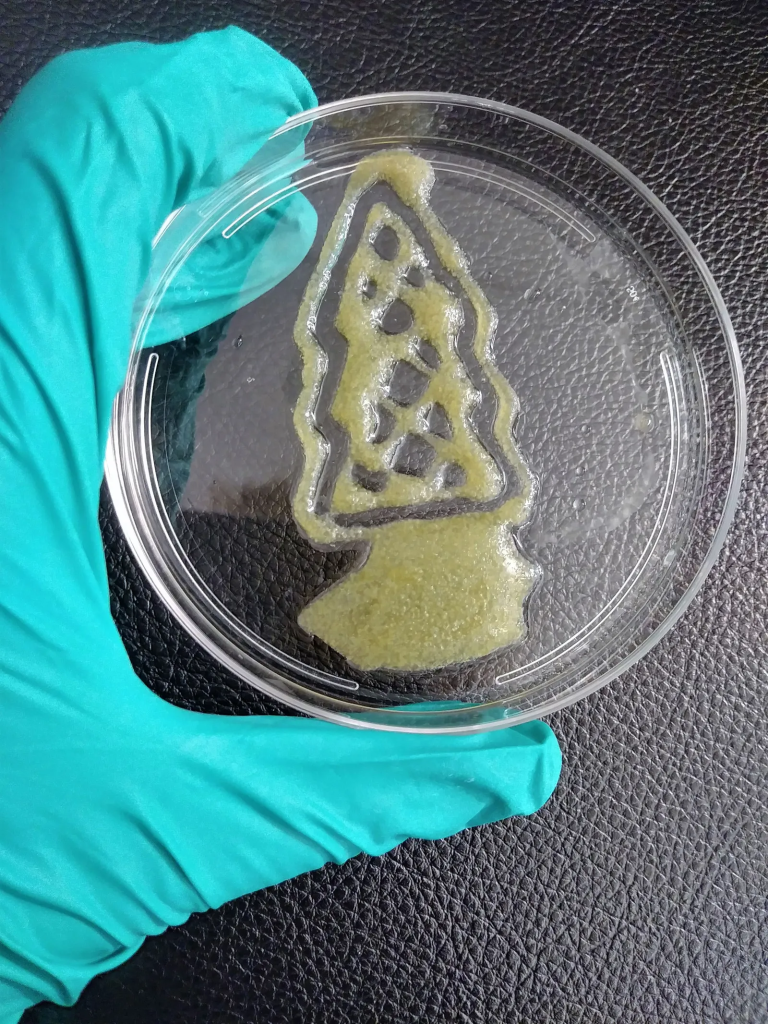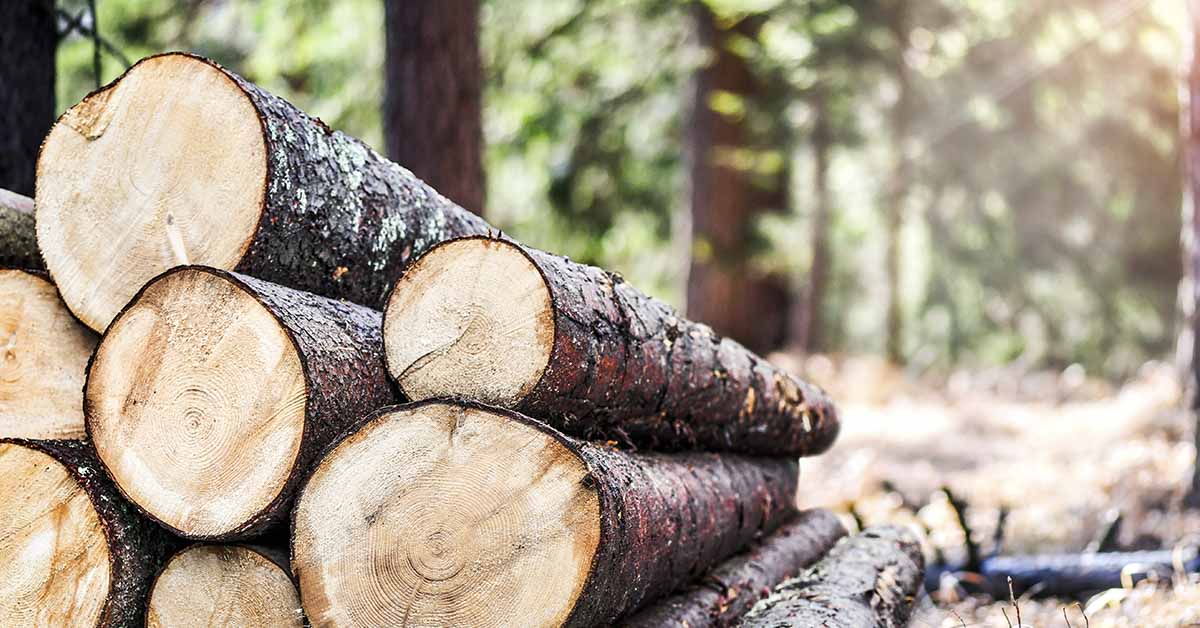Deforestation is a far more perilous problem than it was a couple of decades ago. While there have been activists who have called for a halt to the indiscriminate cutting of trees, no viable alternative had been researched. But that ignorance is a thing of the past. We now have technology that can allow us to use lab-grown wood for printing and other purposes. So, we would essentially be able to print as much wood as we want without harming even a single tree. Incidentally, a recent global survey on forests has revealed that since the beginning of civilization, we have already destroyed around 54% of the total population of trees on this planet.
Lab-Grown Wood Could Be A Necessity For The Future
But this is the time to implement a change in the way we go about doing things. A study published in the journal Materials Today did shed some light on the first 3D-printed lab-grown wood in the world. Through this research, scientists at MIT have demonstrated that one wouldn’t need to cut trees to produce timber. The authors of this research devised customizable wood in their lab from the cells of a plant called the Zinnia elegans. It is popularly referred to as the common zinnia. The scientists claimed that this approach would result in humans being able to bio-print wood of any size and shape. This further implies that if anyone wanted a wooden table, they would be able to produce it directly from the cells.
This development would ensure that no deforestation takes place. Moreover, the wood shavings don’t get wasted- which is usually the result of traditional furniture. The innovation was first achieved by treating the cells of the flowering plant with a liquid medium first. After that, it was introduced to a gel solution. The latter simply comprises nutrients and hormones.
The scientists were able to control the strength, stiffness, density, and several other mechanical and physical properties by changing the concentration of the hormones that were used. One of the authors of the paper went on to write, “(Our) recent work proposed a novel approach to generate 3D-printed, tunable plant materials from cell cultures with the potential to reduce waste, increase yields and production rates, and reduce environmental disruption as cultures are generated from a non-sacrificial plant sample rather than whole plants.” [1]

The Wood Grown By 3D Printing Does Require The Seed Of A Flowering Plant
Yet, it is quite clear that a mixture of gel and plant cells will not really turn into something useful until the calculations are meddled with. Luis Fernando Velasquez- Garcia, the principal scientist in MIT’s Microsystems Technology Laboratories, stated, “The plant cells have the capability to become different cells if you give them the cues for that. You can persuade the cells to do one or another thing, and then they get the properties that you want.”
This lap-grown wood is the brainchild of the lead author of this study- Ashley Beckwith. After completing her work at MIT, this scientist created a company called FORAY bioscience. There, she and her colleagues would be developing new methods and techniques to grow wood. These techniques wouldn’t need one to cut the trees. While the use of the flowering plant is never the final solution to this problem, it is definitely a step that has been taken in the right direction. This technique is also the first of its kind that employs tissue engineering for creating plant matter in a lab itself. Until this point, scientists had been utilizing the method for animal cell culture.
Speaking about this project, Ashley stated, “Analogous concepts have not been translated to the plant culture space, particularly with respect to the production of materials. This work thus represents a first look at a cellular agriculture approach to plant material generation.” One of the lead scientists working on a variant of this project at MIT, Jeffrey Bornstein, had this to say in a May 25 news release- “This work demonstrates the power that technology at the interface between engineering and biology can bring to bear on an environmental challenge. The work is leveraging advances originally developed for health care applications.”
The Development Has Not Been Overnight, And Several Steps Have Been Charted Already
While Ashley Beckwith has not been able to completely cultivate full-blown timber replacements, they have been able to alter the dynamics of the cellular DNA of the plant. This would then enable them to bring about lab-grown wood. Beckwith stated, “In the human body, you have hormones that determine how your cells develop and how certain traits emerge. In the same way, by changing the hormone concentrations in the nutrient broth, the plant cells respond differently. Just by manipulating these tiny chemical quantities, we can elicit pretty dramatic changes in terms of the physical outcomes.” [2]

The researchers were smart enough to properly take advantage of plant cell adaptability in a way that would remind one of how stem cells shift their forms to fulfill a whole range of specific functions. Firstly, the researchers managed to extrude the cells of the plant. Then they placed them into a petri dish for around three continuous months of incubated darkness. After that, they brought in a dehydration process before the entire segment was complete.
The researchers then announced that they were able to grow the plant material with solidity and stiffness that was eerily reminiscent of natural wood. Now, while Zinnia plants might be where they started, scientists are definitely not going to shirk away from exploring using other species. This involves commercially important tree species, in their process.
With The Lab-Grown Wood, The Possibilities For Creation and Innovation Are Endless
Regarding the ability to customize the lab-grown wood in different sizes and shapes, Beckwith mentioned, “The idea is that you can grow these plant materials in exactly the shape that you need, so you don’t need to do any subtractive manufacturing after the fact, which reduces the amount of energy and waste. There is a lot of potential to expand this and grow three-dimensional structures.” This finds some ground in the words of Velasquez-Garcia, who believes customization will provide a huge benefit. In the news release, he stated, “I think the real opportunity here is to be optimal with what you use and how you use it. If you want to create an object that is going to serve some purpose, there are mechanical expectations to consider.”
It is also an added benefit that lab-grown wood will not be dependent on pesticides, climate, or even arable land for cultivation. And if one were to produce only the important portions of plants, it would also cut down on wastage. Garcia mentioned, “The higher level idea is about producing goods where it’s needed, when it’s needed. Right now, we have this model where we produce goods in very few locations, and then we spread them.” [3]
Along with the possibility of growing the whole furniture with lab-grown wood, the materials could also be used to enhance the production of chemicals and fuels. Xuejun Pan, a professor in the Department of Biological Systems Engineering at the University of Wisconsin, went on to state, “You don’t have to necessarily grow a strong piece of wood. If you can produce biomass, for example, as a future feedstock for bioindustry- competitively and productively- that could be attractive.”
Sources
- “We can now 3D print as much wood as we want without cutting a single tree.” Interesting Engineering. Rupendra Brahambhatt. December 19, 2022.
- “Nature Makes Wood. Could a Lab Make It Better?” Wired. Keith Gigglogy. February 16, 2021,
- “The Lumber Shortage Sucks, But Lab-Grown Wood Could Save Your Next DIY Project.” Popular Mechanics. Tim Newcomb. June 9, 2022.

